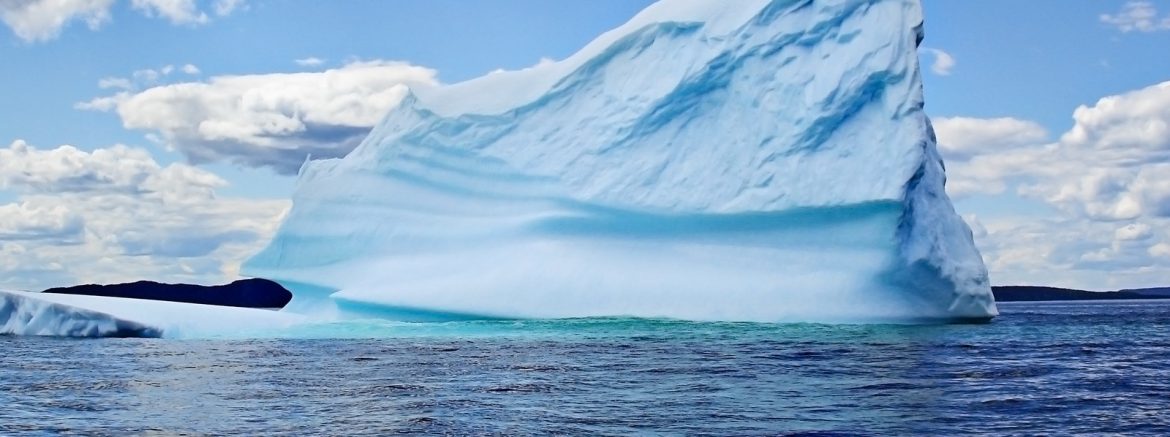Newfoundland is one of the top areas on the planet to view icebergs. An average of 250 icebergs float along the Grand Banks, a path in the chilly waters of the Labrador Current known as “Iceberg Alley,” each year. They are a popular attraction amongst locals and tourists.
The best time of the year to view Newfoundland icebergs is between the springtime and early summer season, from April till June. Popular spots to see icebergs are:
- Bay Bulls
- Witless Bay
- St. John’s/Cape Spear
- Bonavista
- Twillingate
- La Scie
- St. Anthony
The icebergs seen off the coast of Newfoundland originate from the ancient glaciers of Greenland. These glaciers contain ice which is said to be between 10,000 to 15,000 years old.
The Ice shelves from the glaciers shatter into bits and fall into the sea (a thing called calving), and an iceberg is born. From here an iceberg begins its 2-3 year journey – finally southwards.
The Icebergs first heads north – get taken up by the currents and brought into the Baffin Bay where they will spend their first winter.
Come springtime, and after the pack ice melts, the icebergs are released and are once again at the mercy of the currents that bring them through the Davis Strait to the Labrador Sea and the northern shore of Labrador. They will spend another winter trapped in pack ice off the coast of Northern Labrador in the Labrador Sea.
Try out the Iceberg Finder for an idea of where to see some Newfoundland Icebergs!
Newfoundland Iceberg Facts
- The glaciers of western Greenland, where 90% of Newfoundland’s icebergs originate from, are amongst the fasting moving on earth, up to seven kilometers yearly.
- The term “iceberg” refers to balls of ice bigger than 5 meters (16 feet) across. The smallest Icebergs are called “bergy bits,” which are the extent of a little home, and “growlers,” which can be as small grand piano. Because radar may not pick them up, these little pieces are dangerous to ships.
- The typical weight for an iceberg is 100,000-200,000 tons and is equivalent to the size of a 15 story building.
- After the Titanic sank due to a collision with an iceberg, the USA, Canada and 11 other countries formed the International Ice Patrol to warn water vessels of icebergs in the North Atlantic. The International Ice Patrol uses radars and planes to monitor icebergs that float into important transport lanes.
- Shockingly it takes approximately two to three years for these enormous icebergs to reach Newfoundland covering a distance of 1,600 nautical miles.
- The phrase “tip of the iceberg” came to be, as 90% of an iceberg is under water. Also, Its maximum width under water is 20% to 30% bigger than you can see at the surface.
- A Newfoundland Beer brewery offers a beer called “Iceberg” which is brewed using iceberg water!
Book your trip for Newfoundland’s Iceberg season now!


